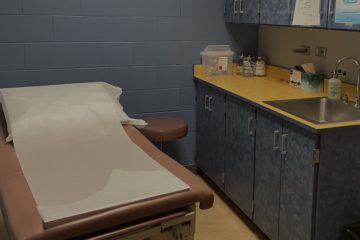The West Virginia Poison Center is reporting an increase in intentional self-poisoning among adolescents, particularly among 15-year-olds— an upward trend that has been largely uninterrupted for over seven years, despite a nearly six percent drop in the population of children 18 years and younger since 2014 in the state.
According to Dr. Elizabeth J. Scharman, Executive/Clinical Director of the WV Poison Center and professor with the West Virginia University School of Pharmacy, this jump in cases mirrors an increase in self-harm attempts by adolescents reported by poison centers across the country. Research from the National Poison Data System shows that the incidence and rate of intentional self-poisoning from children younger than 19 years old began increasing in 2011 and has escalated since.
This alarming trend in West Virginia began several years before the COVID-19 pandemic and has increased through 2021. In 2015, the West Virginia Poison Control Center assisted in the medical management of over 390 intentional self-harm incidents ages 12-18. In 2017, that number increased to 520. In 2021, the number was 617.
While existing patterns for both sexes were similar, cases were significantly higher among 15-year-olds, with an over 64 percent increase since 2015. Importantly, when disaggregating the data by age, the number of incidents has declined in 17- and 18-year-olds but increased enough in 14- to15-year-olds to significantly increase total adolescent rates.
Since West Virginia law does not require hospitals and healthcare facilities to report overdoses to the WV Poison Center, its data likely captures only a portion of the self-harm attempts in West Virginia’s youth. Some attempts aren’t reported to the poison center. Some doctors in emergency departments may choose to handle an overdose without calling, or people at home may not know the agency’s number.
West Virginia is a state that does not compile and report comprehensive emergency room data. In November 2020, the CDC reported an increase in children’s mental health-related ER visits, beginning in April 2020. Since West Virginia does not collect and report comprehensive emergency department data, the breadth of the problem is unclear. Some states like Virginia provide detailed briefs that examine self-harm and suicide ideation among youth by analyzing ED data. Without information like this, data such as that reported by WV Poison Center are not all-inclusive but do provide important insights into the mental health struggles facing the state’s younger population. While WV does track and review adolescent self-harm-related deaths, the WV Poison Center data is the only current source of information on adolescent self-harm attempts that are not fatal and may or may not have been evaluated in a health care facility.
For some adolescents, a self-harm attempt is a means of obtaining the attention they seek, or a self-harm attempt is a manifestation of poor control over distressing feelings rather than a desire to die. Unfortunately, death can occur depending on the medication used, even though death by suicide was not the adolescent’s intent. The WV Poison Center’s goal is to optimize management of the poisoned patient to prevent fatal outcomes. Reviewing non-fatal self-harm attempts is important as research shows that a prior self-harm attempt increases the likelihood of future self-harm attempts and eventually a fatal outcome. Reaching adolescents with a non-fatal self-harm attempt is, therefore, a critical time to intervene and prevent future deaths.
The West Virginia Poison Center is one of 55 poison control centers in the United States. Each provides free, 24-hour professional advice to anyone in the 50 states, Puerto Rico, the Federated States of Micronesia, American Samoa, the U.S. Virgin Islands, and Guam. Each center provides comprehensive emergency poison information, prevention, and educational resources to West Virginians 24 hours a day, seven days a week, 365 days a year. Each call to the poison center is answered by a specialist in poison information who is specially trained in the management of poisoning emergencies.
According to Dr. Scharman, calls regarding adolescents often come from a healthcare professional caring for a patient who already came to the hospital following an intentional poisoning attempt. Sometimes the call comes from a concerned parent or caregiver, a close friend, or the individual themselves. Dr. Scharman said the center advises about what to do on the spot, then assists the caller with determining the type of transportation required to get them to the ED. For calls from home, the Poison Center calls the hospital to let them know the individual is coming, what signs and symptoms to expect, and current management recommendations. Then, the Poison Specialists follow up with the treating facility until the patient is discharged.
While these national and state statistics are cause for alarm, there are precautions anyone can take to care for at-risk teens and adolescents. Parents and caregivers need to lock up all medications after each use to prevent an overdose. This includes prescription medications and antidepressants. Children and adolescents should never self-medicate. Though not used as often as medication for self-harm, household chemicals can also pose a dangerous threat to older children/teens experiencing suicidal ideologies.
Communication is key. If adolescents feel sad, it’s good to set them up with someone they can trust and discuss their feelings. If someone you know is in crisis, or if you are feeling at all in danger of self-harm, call the National Suicide Prevention Lifeline at 1-800-273-8255. You can also reach the Crisis Text Line by texting HELLO to 741741. Both services are free, confidential, and available 24/7.
You can call the West Virginia Poison Center for comprehensive emergency poison information, prevention, and educational resources for West Virginians at 1-800-222-1222.
You can contact Dr. Elizabeth Scharman to discuss the upward trend the poison control center is seeing in adolescents attempting to intentionally harm themselves. The WV Poison Center maintains a data dashboard on its website that tracks, analyzes, and displays vital data points and metrics that can be sorted by county.
Written by Kelli Caseman and Dr. Elizabeth Scharman




1 Comment
Debra · June 7, 2022 at 5:29 pm
Maybe it’s all the chaos, misinformation, seeing facts about our government we know are true but yet receive no justice, threats of global nuclear war, food shortages and inflation sky high prices just to survive, food, rents, hope of a decent future is gone.